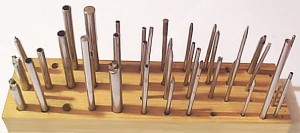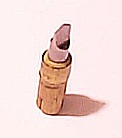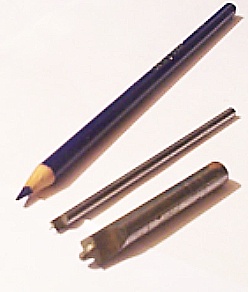HOW DO I FIX THE CHIMES?
Now a little bit about chime adjustment. I have had numerous requests about this topic. First lets get on the same page, so to speak, about the meaning of chime, and stike, and gong. For our purposes here the chime will mean the melody that plays on the quarter hours. The strike will mean the hour count. Gong will mean what ever is the sound making device. Things such as bells, wires, rods, steel rods, or steel coils are included. If there is an issue with a specific type of gong material it will be indicated. Hammer will mean the device that hits the gong. It usually looks like a miniture hammer.
There are several aspects to chime and strike. One is volume. Another is tempo. A third is the actual pitch of the notes and whether or not the chord on the hour strike is “in tune” and whether or not the melody sounds in tune.
Volume can mean different things to different people. Here we are talking about amplitude, not frequency. A higher pitch may sound louder to some people, depending on their hearing, so if you are in business, be aware of this. As you might guess the amplitude or volume is pretty much directly related to how hard the hammer hits the gong. Consider a hammer that is solid brass (or steel) hitting a gong; the frequency spectrum of sound produced will be on the high end making a “tinny” sound. You can change the volume of this by reducing the impact of the hammer hitting the gong. To do this change the return spring to one with less strength, move the hammer away from the gong so it hits with less force, or reduce the distance the hammer travels ( reduce the throw ) before it hits the gong. The last two methods are the best choices. The first method is a last resort and one must be very careful when altering a clock’s design. So reducing the throw or moving the hammer away from the gong are the best methods for changing volume. DO NOT BEND THE GONG, EVER. A good general rule ( when making an adjustment in clock repair ) is that if you saw it move it moved too much. Adjusting hammers that produce sound for the chime or strike is very difficult unless you have lots of experience. The above gives you one perspective.
SOME FACTS ABOUT THE SOUND OF CHIMES:
One: If you hit a gong hard it will produce a loud sound and will produce a different frequency spectrum of sound with more amplitude than if you hit it with less force.
Two: A hard substance on a hammer such as steel or brass will make a high pitched sound when it hits the gong, and will be percieved as loud to many people.
Three: A soft substance on a hammer such as cloth, or plastic, or rubber, will fail to produce high amplitude high frequency vibrations. This will be percieved as soft by many people.
Four: A longer gong rod, or larger bell does not necessarily produce a lower pitch than does a slightly shorter rod or smaller bell.
Five: The more substance ( mass ) a given gong material has the lower the frequency produced when it is hit by the hammer.
Six: The design of the gong where it attaches to the mounting screw will affect the frequency of vibration along with the size and length.
The tempo of the strike or chime is directly related to adjustment. This is a very complicated subject and is different for every clock. The tempo is determined by the actuating mechanisms that lift the hammers. These usually consist of pins, or cams, or star wheels, or drums with lift pins in specific areas attached to gears.
There is also the issue of sequence. Most modern clocks are self correcting. For example, the “Westminister” chime has a melody that plays four notes on the quarter hour, eight notes on the half hour, twelve notes on the three quarter hour, and sixteen notes on the hour followed by the hour count. These mechanisms are set up so as to self correct if they get out of sequence. If one of these clocks is allowed to run down and stop, the sequence will probably be off for at least one hour. If the hour count rack is stuck behind the snail, it may take up to 12 hours to correct itself. If, when the clock stops, the owner forces the minute hand ahead, in an attempt to reset it, there will usually be damage to the trip lever inside and the clock will not work right until the correct angle is restored to this lever. If the owner moves the hour hand to make it match the count, the clock will be off permanently and they will not even realize what they have done. If they are lucky they will not break the hour hand when they try to move it.
WHAT IF THE CLOCK DOES NOT CHIME ( OR STRIKE ) EXACTLY WHEN THE MINUTE HAND REACHES THE 12, 3, 6, OR 9? ( 12 OR 6 IN THE CASE OF A TIME AND STRIKE CLOCK )
This can be caused by a number of different problems. The most common cause of this is that the minute hand gets forced ahead after the clock runs down and stops; or the minute hand gets moved while the clock is chiming or striking. Most of the time the owner won’t realize the damage they have done. This is not the only aspect of this problem by any means. If the trip cam is loose, or if the trip lever is loose or bent at the incorrect angle the same problem may occur. If the trip cam is worn or if the pin used as the working surface on the trip lever is loose; again the same problem may occur. If the minute hand hub slips slightly, the chime or strike won’t trip when the minute hand is at the corresponding 12, 3, 6, or 9. This problem can also be caused by too much oil on the trip lever, or trip lever axel or a broken or jammed return spring on the trip lever. This can be a very difficult problem to solve. This is where the repair person needs to have a lot of experience and a very sharp eye for things out of place in most every kind of mechanism. These are just some of the aspects of this problem.



